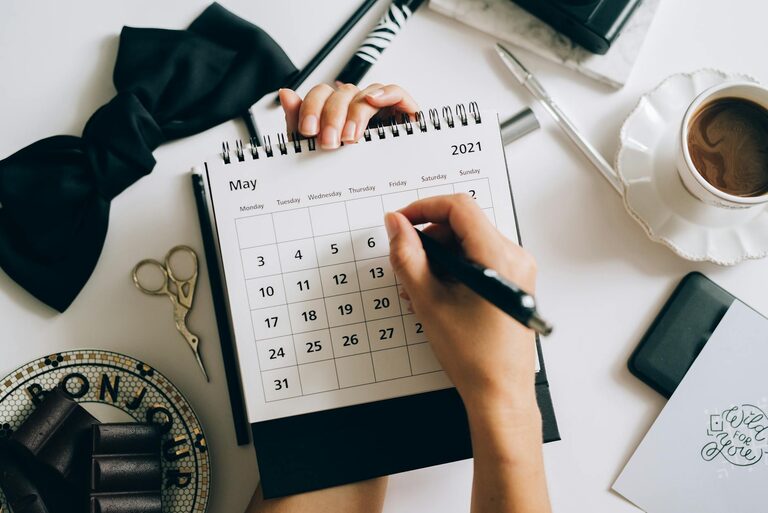Creating a weekly reset routine is a powerful way to clear your mind, organize your space, and set positive intentions for the week ahead. Whether you have a busy schedule or prefer a slow, relaxing weekend, a set of simple, consistent habits can help you recharge both mentally and physically. In this post, we’ll explore how to design a weekly reset routine tailored to your lifestyle, so you can feel refreshed and ready every Monday.
What Is a Weekly Reset Routine?
A weekly reset routine is a dedicated time set aside once a week to review the past days, organize your environment, plan for upcoming tasks, and nurture yourself. Unlike daily habits, these activities are more comprehensive and slow-paced. They focus on both practical aspects (like cleaning and planning) and wellness practices (like reflection and relaxation).
Benefits of a weekly reset routine include:
– Reduced stress and overwhelm
– Improved focus and productivity
– Enhanced energy and motivation
– Greater clarity on goals and priorities
Step 1: Choose the Best Day and Time
The foundation of a successful reset routine is finding a consistent time that fits your weekly rhythm:
– Pick a day for you. Many choose Sunday or Saturday, but any quiet day works if it aligns with your schedule.
– Set a time that suits your energy levels. Morning supporters might like to start their day tidying up and planning, while night owls may prefer winding down with calming tasks.
– Block your calendar. Treat this time as an appointment with yourself to avoid interruptions.
Step 2: Create Your Reset Checklist
A checklist helps keep your routine structured and ensures important tasks are not overlooked. Here are common components to consider:
Organize Your Space
Physical clutter can contribute to mental clutter. Use part of your reset time to:
– Tidy your workspace or home
– Put away laundry or dishes
– Clear out unnecessary items or trash
– Set up your environment for the days ahead
Review Your Schedule and To-Dos
Planning is key to a smooth week. Some useful planning activities include:
– Review last week’s accomplishments and challenges
– Update your calendar with appointments and deadlines
– Write your to-do list, focusing on priorities
– Set realistic goals for the week
Reflect and Journal
Taking a moment to reflect can boost your self-awareness and emotional well-being:
– Write about your feelings from the previous week
– Note what you’re grateful for
– Outline intentions or affirmations for the week ahead
Self-Care and Wellness
A reset routine isn’t complete without caring for yourself:
– Prepare healthy meals or meal plans
– Schedule workouts or stretching sessions
– Practice meditation, deep breathing, or mindfulness
– Take a long bath, read, or engage in other relaxing activities
Step 3: Tailor the Routine to Your Needs
Everyone’s ideal weekly reset looks different. Consider your unique circumstances when designing your routine:
– Busy parents: Include quick organizing tasks and plan family meals to save time.
– Remote workers: Focus on creating a distraction-free workspace and setting boundaries.
– Students: Allocate time to review notes, plan assignments, and rest.
– Creative professionals: Include a brainstorming session or inspiration board update.
Step 4: Keep It Manageable and Flexible
Avoid turning your reset routine into another stressful task. Keep it achievable:
– Limit the routine to 1–2 hours
– Rotate tasks weekly if needed (clean the kitchen one week, focus on paperwork the next)
– Listen to your energy levels and adjust activities accordingly
Step 5: Use Tools to Support Your Routine
Technology and simple tools can help you stay consistent:
– Use a planner or digital calendar for scheduling
– Set reminders or alarms
– Try apps for journaling or habit tracking
– Create a checklist template to reuse each week
Tips for Maintaining Your Weekly Reset Routine
– Start small: Introduce one or two habits and build over time.
– Make it enjoyable: Add music, candles, or treats to your reset time.
– Be kind to yourself: If you miss a week, get back to it without guilt.
– Share your process: Invite family or friends to reset with you for motivation.
Sample Weekly Reset Routine Example
Here’s a simple example to get you started (about 90 minutes):
- **Declutter space (20 minutes):** Tidy your desk or living area.
- **Plan upcoming week (20 minutes):** Review calendar, set priorities.
- **Reflect and journal (15 minutes):** Write thoughts and intentions.
- **Prepare meals or groceries (20 minutes):** Make a shopping list or cook meals.
- **Self-care (15 minutes):** Stretch or meditate.
Adjust as goals and time allow.
—
Designing a weekly reset routine is about creating a sustainable ritual that grounds you and prepares you for a successful week. By dedicating focused time to organizing, planning, and self-care, you can maintain balance, reduce stress, and boost productivity. Start simple, customize as you go, and watch how this weekly habit transforms your routine—and your mindset.

